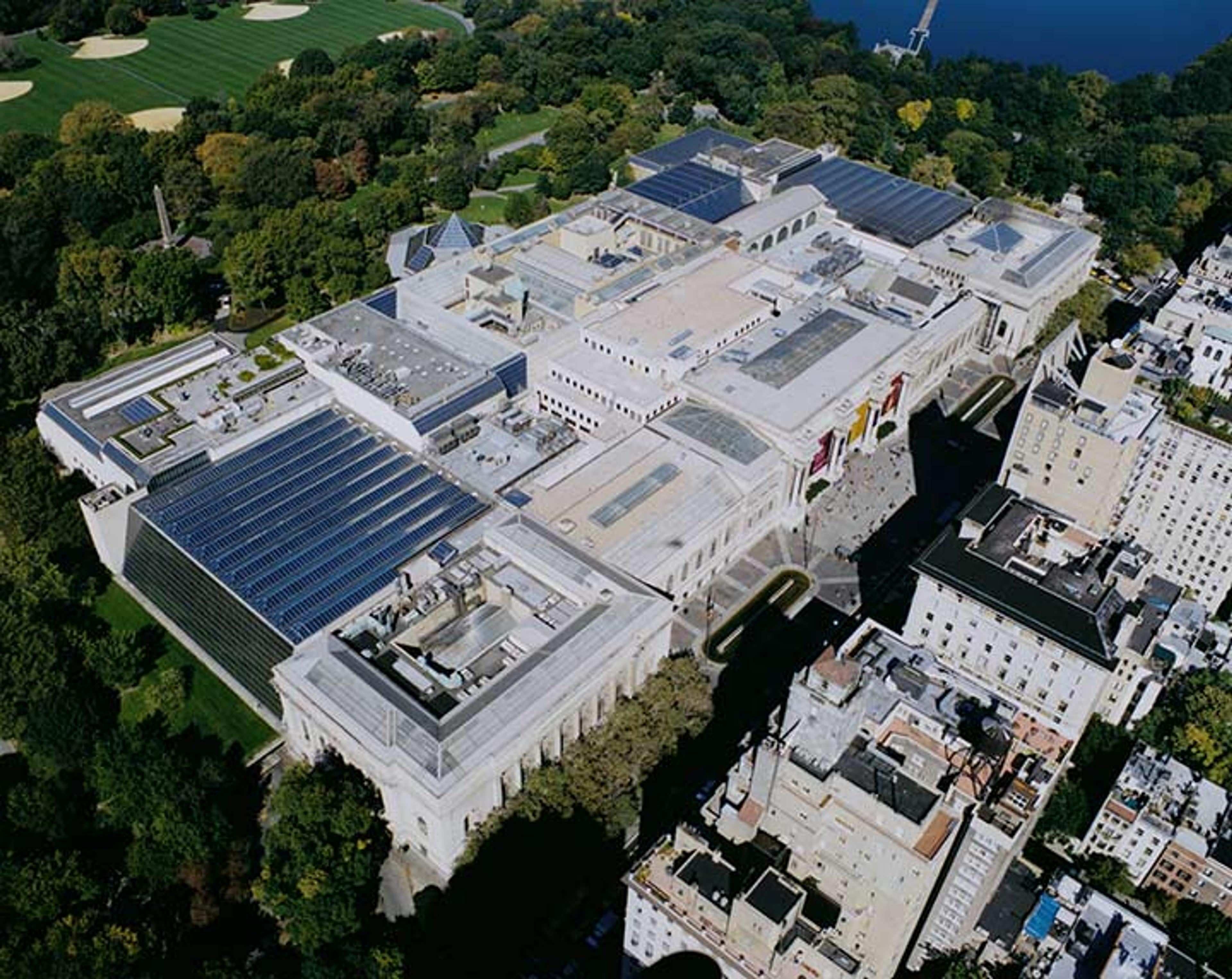
Calvert Vaux and Jacob Wrey Mould. Plan for the Museum, ca. 1872; probably drawn by Louis P. de Cesnola, ca. 1880, and showing cross wing as built. Ink on linen
«Have you ever wondered who made The Met? Why did they decide to create a museum for art? How did they build this Museum? How big is The Met? If so, you are not alone. These are some of the questions that our #MetKids asked us to answer. Read on for fun facts about who, what, where, when, and why The Metropolitan Museum of Art was created!»
As an intern in the Education Department, a big part of my job is doing research, which comes in handy for answering questions about The Met. So when I heard the great questions that our #MetKids asked, I did some digging.
Who made The Met?
In 1870 The Metropolitan Museum of Art was founded by artists and businessmen who wanted to share their love of art and education with others.
Why did the founders decide to create this Museum?
The founders created The Met for everyone to come and learn about art from around the world and throughout history. The Museum is like a big library filled with art from across the globe, or like a time machine that lets us explore art that was made more than 5,000 years ago as well as art that was created just this year.
How did they build the Museum?
The Museum was first located in a row house on Fifth Avenue between 53rd and 54th Streets.

681 Fifth Avenue, the Museum's Home in 1872–73, ca. 1900
From 1873 to 1879, The Met was located in a grand home on 14th Street between Sixth and Seventh Avenues.

128 West 14th Street, the Museum's home from 1873 to 1879, ca. 1900
In 1880 The Met moved to its current location at Fifth Avenue and 82nd Street, where it has been for more than 100 years. The original building designed by Calvert Vaux and Jacob Wrey Mould was much smaller than the one you see today.

A stereograph of Vaux and Mould's Museum building as seen from the southwest in 1880. View of The Metropolitan Museum of Art, 1880. Photograph, 3 1/2 x 6 7/8 in. (8.9 x 17.5 cm). The Metropolitan Museum of Art, New York, Gift of Herbert Mitchell, 1995 (1995.114.1)
Since it was first built, many galleries have been added and changes have been made. Brian Cha, a former intern in the Design Department, wrote a blog post about the many changes made to the architecture over the years. Watch the animation he made that shows how the building changed over time!
You can still see a part of the facade (the outside face of the original building) in The Robert Wood Johnson Jr. Gallery, where the Museum displays highlights from its collection of drawings and prints.

At right, an arch from the Museum's original Fifth Avenue facade
In The Carroll and Milton Petrie European Sculpture Court, you can see the entrance built in 1888, when many people in New York still traveled in horse-drawn carriages and the roads leading to The Met Fifth Avenue were made of dirt instead of asphalt.

The Weston wing as seen from the southwest, ca. 1889
Since 1880 The Met has grown from one building to 21! If you want to learn even more about the changes to The Met Fifth Avenue you can look at an issue of The Metropolitan Museum of Art Bulletin by Morrison H. Heckscher.
How many inches is The Met?
The Museum is covered by nearly 14 acres of roof, which could fit 8 soccer fields. If you measure every floor of The Met Fifth Avenue, the building measures 2.2 million square feet—that's more than 26 million inches! For comparison, the White House is almost 55,000 square feet. That means we could fit about 40 White Houses inside of The Met Fifth Avenue alone!

Aerial view of The Met Fifth Avenue facing northwest, 2001
Those numbers don't even count The Met's other buildings, The Met Breuer and The Met Cloisters, or the offsite storage facilities that hold some of the three million works of art in The Met collection.

Left: Photo of The Met Breuer on Madison Avenue. Right: Photo of The Met Cloisters in Fort Tryon Park
And you may wonder how many light bulbs it takes to light all the galleries, offices, and storage spaces at The Met: more than 60,000! That's more lights than the New Year's Eve Ball in Times Square!
We love reading your questions and look forward to answering more! What's your question for The Met? Write it in the comments below or email it to metkids@metmuseum.org.